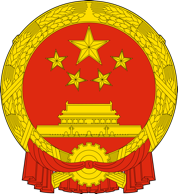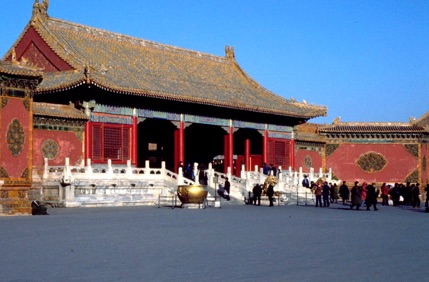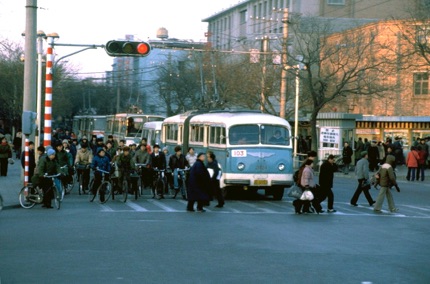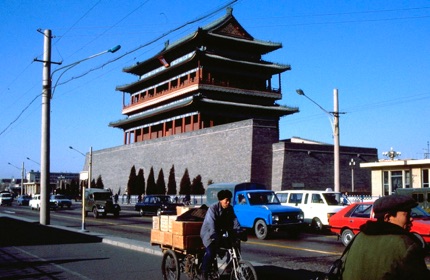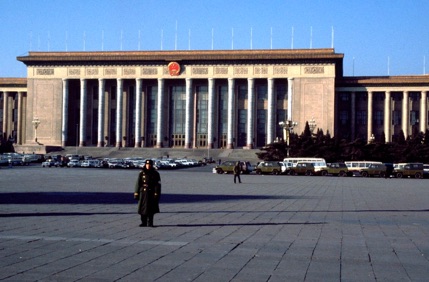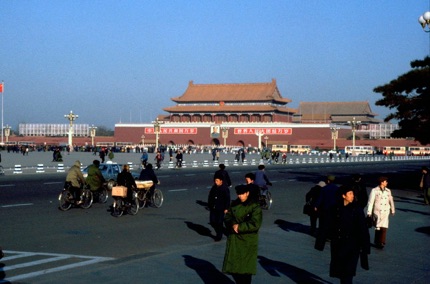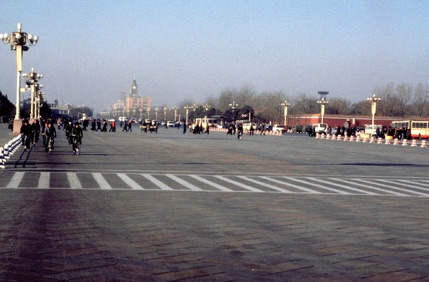China 1985

Kyrgyzstan and Tajikistan 2018

The Chinese Language students made their third visit to the Foreign Languages School this morning (or the second if the Peking Opera visit is ignored). The aim of the morning was to have a lesson on the history and geography of China in Chinese. It was essentially an exercise in tolerance for the boys, as the teachers spoke fluent Chinese much too quickly for the students to understand. Several of them felt that the two hours of sitting in a bitterly cold classroom was not a wise utilisation of their precious time in China.
While the Chinese Language students were doing this, I accompanied the Geography student who was not also studying Chinese for a visit to the Underground City. This consists of a huge complex of tunnels built with minimal machinery under Beijing between 1969 and 1979 to provide refuge in the event of a Soviet nuclear attack. There are literally miles and miles of underground tunnels with 46 entrances from various parts of the city, with underground shops, factories, hotels, etc.
Getting there was something of an exercise in frustration, however. We waited half an hour for a taxi (or, really, a taxi driver, since there were several score of taxis parked outside our hotel). It then took one and a quarter hours to find the entrance, which is about six kilometres from the hotel, even though I had the address and directions written out in Chinese by our local guide. The taxi driver, who spoke no English but made me realise how many strategic Chinese phrases I knew, stopped six times to ask directions. I’m glad the Soviets didn’t attack Beijing before his drive with us! We finally found the main entrance and command centre behind an ordinary shop front down a narrow little hutong (or laneway) off Qianmen Street.
We walked through the command headquarters, down 40 or so steps, along some long, winding tunnels to discover an English-speaking gentleman happy to show us through part of the complex. He finished his tour with a complimentary cup of green tea for each of us. Seeing that he also had a stall of Chinese medicines in his shop, I mentioned that I was suffering from a cold (it really should have been obvious to him), so he sold me some herbal tablets (50 fen for a bottle of 20). Called Jingzhi Yin Qiao Jiedupian, they seemed to work quite well in relieving the worst of the symptoms – indeed, just saying the name seemed to clear the sinuses.
After returning to the earth’s surface, we strolled along several of the small, narrow hutongs which wind through the fast disappearing grey courtyard homes of old Beijing. When one travels along Beijing’s main roads, tall blocks of units are seen almost everywhere, but past this veneer the centres of most of the large blocks of land behind the buildings that line streets are still criss-crossed by these very old small homes. Many of the homes are so old that quite substantial plants are growing from the ceramic tiles on their roofs.
Our strolling took us to Chongwenmen, so to experience another aspect of the underground city we took a short ride on Beijing’s new underground railway to Tian An Men Square (10 fen, about 4 cents for a ride anywhere on the system). From there we walked along Qianmen Street, past the old South Gate of the Imperial City to the hotel where our guide said we would all be having lunch. Unfortunately he didn’t tell me where in the hotel we were eating, and so began a 20 minute search for our group and what was left of a cold lunch.
After lunch, we toured the Forbidden City, which until the 1911 revolution was the palace of the emperors of China. It is a huge complex of over 9,000 rooms, all with bright red walls and golden ceramic roofs contrasting with the greyness and drabness of Beijing in general. It marks the centre of the Imperial City of Peking, and the Chinese used to believe it was thus the centre of the universe, with the central north-south pathway (along which only the emperor could walk upon pain of death) dividing the eastern and western halves of the universe. The names of the buildings alone evoke a sense of majesty: Hall of Supreme Harmony, Palace of Heavenly Purity, Hall of Vigorous Fertility, Palace of Earthly Tranquility, Thousand Autumns Pavilion, Gate of Divine Military Genius, Hall of Mental Cultivation, Palace of Eternal Spring, and so on. Unlike its Imperial times, the Forbidden City is now freely open to the public as “The Palace Museum”. The “new Forbidden City”, Zhongnanhai, where China’s current leaders live, is next door and not nearly so accessible.
Some boys in the group reacted negatively to the vastness of art treasures on display, quickly glancing at a room full of works of art, proclaiming them to be tasteless, and moving on. This irritated some other members of the group, who did not wish to be rushed through a once in a lifetime visit such as this. Perhaps Year 10 boys are too young to appreciate fine art. Whatever one thought of the works of art (and in all fairness, the best of them were taken away to Taiwan in 1949), one could not fail to be impressed by the grandeur of the architecture (although one student from Goondiwindi felt it compared unfavourably with sheep stations in his area).
Back at the hotel, I learned that the authorisation for replacement of the student’s lost ticket had arrived from Sydney, so a quick return trip was made to the Qantas office to obtain the letter. After dinner, we had a birthday party for the youngest student in the group who turned 15 that day, celebrating with songs, a cake, biscuits, presents and black tea bags (Liptons), brought from Australia especially for the occasion.

Day 16
Beijing
Wednesday, 18 December 1985
